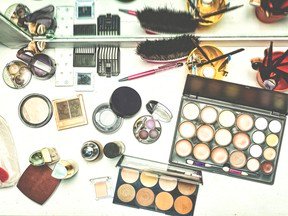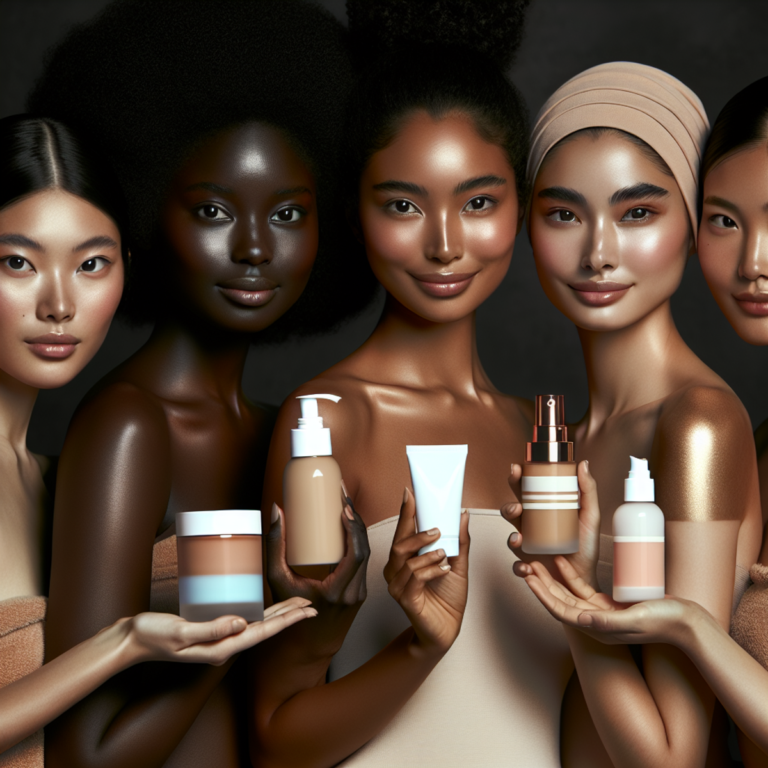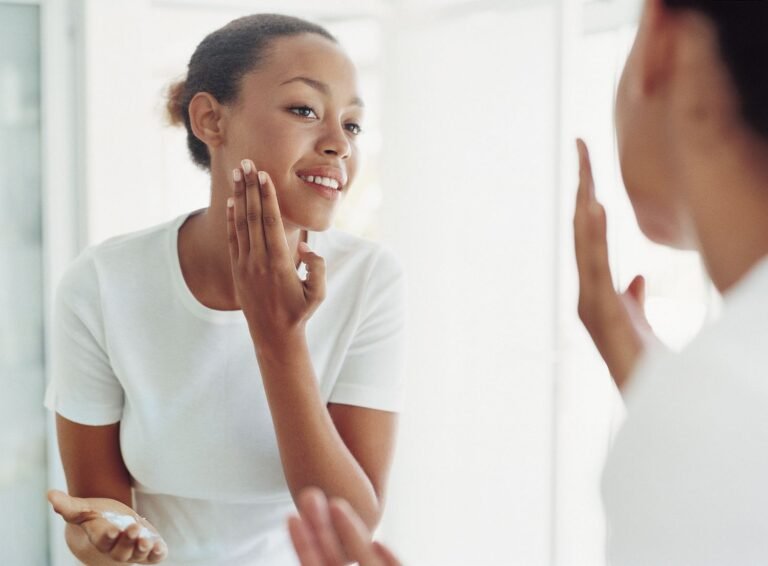How Often Should You Wash Your Hair?

Introduction
Maintaining proper hair hygiene is essential for healthy and beautiful hair. One important aspect of hair care is determining how often you should wash your hair. There are various factors that influence this decision, including hair type, scalp oiliness, and activity levels. In this article, we will explore the importance of finding the right balance in your hair washing routine to keep your locks looking their best.
There are common misconceptions surrounding hair washing frequency that need to be addressed. Some believe that washing your hair every day is necessary for cleanliness, while others advocate for infrequent washing to preserve the natural oils in the hair. However, neither extreme approach is ideal for everyone.
The truth is that there is no one-size-fits-all answer when it comes to how often you should wash your hair. Each person’s hair is unique, and what works for one may not work for another. It’s important to take into consideration individual needs and factors that can impact your hair washing routine.
By understanding these factors and adopting a balanced approach, you can maintain a healthy scalp, prevent excessive dryness or oiliness, and promote overall hair health. So, let’s dive deeper into the different factors that influence how often you should wash your hair and find the perfect balance for your specific needs.
Understanding the Factors that Influence How Often You Should Wash Your Hair
Determining how often you should wash your hair is a highly individualized aspect of hair care, influenced by various factors. By understanding these factors, you can establish a personalized hair washing routine that caters to your specific needs.
1. Hair Type
Different hair types, such as straight, wavy, curly, or kinky hair, have unique characteristics that determine how frequently they should be washed. For instance:
- Individuals with curly or kinky hair often benefit from less frequent washing due to natural oils taking longer to travel down the hair shaft, helping to maintain moisture and prevent dryness. This study provides valuable insights into the impact of hair type on washing frequency.
- Conversely, individuals with straight hair may find that their hair appears oilier more quickly and requires more frequent washing.
2. Scalp Oiliness
The natural oil production of the scalp varies from person to person. Those with:
- Oiler scalps may need to wash their hair more frequently to manage excess oil and maintain a fresh appearance. The American Academy of Dermatology suggests habits for maintaining healthy hair and scalp.
- Drier scalps may be able to extend the time between washes without experiencing an overproduction of oil.
3. Activity Levels
Your level of physical activity and exposure to environmental elements can impact how often you need to wash your hair. If you:
- Engage in regular exercise or have an active lifestyle, you may find that you need to wash your hair more frequently to remove sweat and environmental impurities. Incorporating scalp exfoliation techniques can also enhance the effectiveness of your hair washing routine.
4. Age
As we age, changes in hormone levels can affect the activity of the sebaceous glands, which produce oil for the scalp and hair. This can result in fluctuations in scalp oiliness and influence how often we need to wash our hair. The texture and moisture balance of our hair may also change with age, further impacting our washing frequency.
5. Chemical Treatments
Undergoing chemical processes such as coloring, perming, or straightening may necessitate adjusting your washing frequency. Certain treatments can affect the texture and moisture balance of the hair, requiring a tailored approach to maintain its health and appearance.
Considering these factors provides a solid foundation for understanding how different aspects of your hair and scalp contribute to your unique washing needs. Additionally, while these factors are fundamental in guiding your approach toward establishing an optimal washing routine, it’s essential to recognize that other influencers such as hormonal changes and environmental factors can also play a role in determining your ideal washing frequency.
Finding Your Perfect Balance: Recommended Guidelines and Listening to Your Hair’s Needs
When it comes to determining how often you should wash your hair, it’s essential to find a balance that works best for your hair type and lifestyle. As a starting point, the recommended frequency for washing hair is typically once or twice per week. However, it’s important to remember that these are general guidelines, and individual variations can significantly impact the ideal washing frequency. Here are some key points to consider as you navigate your hair care routine:
General Guidelines
- The once or twice per week recommendation serves as a baseline for most individuals but may not be suitable for everyone. Factors such as hair type, scalp oiliness, and activity levels can influence the optimal washing frequency.
- Stress is another factor to consider when establishing your own hair care routine. It can affect scalp health and oil production, which in turn impacts how often you should wash your hair.
Experimentation and Adaptation
- Pay attention to how your hair and scalp respond to different washing frequencies. Experiment with variations in your routine and observe how your hair looks and feels between washes.
- Be open to adapting your approach based on the changing needs of your hair over time.
Listening to Your Hair’s Signals
- Your hair will often provide cues about its condition and cleanliness. If you notice excessive oiliness, itching, or dryness, it may be an indication that you need to adjust your washing frequency.
- Emphasize the importance of being attuned to your hair’s signals and responding accordingly.
By understanding these recommended guidelines and staying attuned to your hair’s needs, you can establish a personalized approach to hair washing that supports the health and vitality of your hair. Remember that finding the perfect balance may require some trial and error, but by being attentive to your hair’s unique requirements, you can develop a routine that promotes optimal hair health.
Managing Specific Hair Care Challenges with the Right Routine
Addressing common hair care challenges such as oily scalps, thick hair, and curly hair is essential for maintaining healthy and vibrant hair. Tailored approaches can help keep the hair clean without over-washing or stripping its natural oils.
Oily Scalps
If you struggle with an oily scalp, finding the right balance between cleanliness and oil control is crucial. Here are some tips to manage this challenge effectively:
- Use a Clarifying Shampoo: Incorporate a clarifying shampoo into your routine once a week to deeply cleanse the scalp and remove excess oil buildup.
- Avoid Over-Washing: While it may be tempting to wash your hair frequently to combat oiliness, over-washing can actually stimulate more oil production. Try to stick to a consistent washing schedule and resist the urge to wash daily.
- Consider Dry Shampoo: On days when your scalp feels greasy but it’s not time for a full wash, dry shampoo can be a lifesaver. It absorbs excess oil, giving your hair a refreshed look without stripping away natural oils.
- Reverse Washing Technique: Another method that could be beneficial for managing oily scalps is the reverse washing technique. This involves applying conditioner before shampooing, which helps maintain moisture without adding extra weight.
Thick Hair
Managing thick hair requires special attention to ensure that it stays clean and healthy without becoming weighed down by product buildup.
- Hydration is Key: Use a hydrating shampoo and conditioner specifically formulated for thick or coarse hair to maintain moisture balance and prevent dryness.
- Section Your Hair: When washing and conditioning, divide your hair into sections to ensure that all areas receive proper cleansing and hydration.
- Deep Conditioning Treatments: Incorporate deep conditioning treatments into your routine on a regular basis to keep thick hair soft, manageable, and nourished.
Curly Hair
Curly hair has its own set of needs when it comes to cleansing and maintenance. Here are some strategies tailored for curly hair care:
- Co-Washing: Consider co-washing (using conditioner only) between shampoo sessions to refresh your curls without stripping away natural oils.
- Avoid Sulfates: Look for sulfate-free shampoos that won’t dry out your curls or cause frizz. These gentler formulas help maintain the natural moisture balance of curly hair.
- Detangle with Care: Use a wide-tooth comb or your fingers to detangle curly hair while it’s still wet and coated with conditioner to minimize breakage.
Other Hair Types or Conditions
Depending on individual needs, other specific conditions such as fine hair or dandruff-prone scalp may require unique strategies for optimal care. These could include:
- Using volumizing products for fine hair to add body without weighing it down.
- Incorporating anti-dandruff shampoos containing ingredients like ketoconazole
Beyond the Wash: Maintaining Scalp Health and Hydration Between Shampoos
Scalp Hygiene and Overall Hair Health
Understanding how scalp hygiene affects the health of your hair is crucial. Regularly cleansing your scalp with gentle products or targeted treatments can prevent issues like dandruff, itchiness, and excessive oiliness. This is because a clean and balanced scalp creates an optimal environment for hair growth.
Introducing Alternative Hair Care Products
Apart from using traditional shampoos, there are other hair care products that can help you maintain scalp health and extend the time between washes. These products provide nourishment to your hair while managing oiliness:
- Leave-in Conditioners: These products hydrate and nourish both your hair and scalp, keeping them healthy between washes. Contrary to popular belief, hair conditioners are not just for women. They are essential for maintaining healthy hair.
- Scalp Oils: Applying oils to your scalp helps retain moisture, prevent dryness, and soothe any irritation, leading to a healthier scalp.
- Dry Shampoos: If you’re dealing with oily roots, dry shampoos can absorb the excess oil without removing the natural oils from the rest of your hair.
By including these alternative products in your hair care routine, you can balance scalp health with less frequent washing. Not only do they support overall hair health, but they also offer practical solutions for managing oiliness without over-cleansing.
Remember: It’s important to choose products that are suitable for your hair type and scalp condition. If you have any specific concerns or conditions, it’s best to consult with a dermatologist or trichologist for personalized recommendations.

Image by Curology from Unsplash
Lifestyle Tips for Healthy Hair and Scalp
In addition to using the right hair care products, certain lifestyle habits can also contribute to the health of your hair and scalp:
- Balanced Diet: Eating a nutritious diet rich in vitamins, minerals, and proteins can promote healthy hair growth.
- Stress Management: Chronic stress can lead to hair loss or scalp issues, so finding effective ways to manage stress is crucial.
- Regular Exercise: Physical activity improves blood circulation, which can benefit your scalp and hair follicles.
- Avoiding Heat and Chemical Damage: Excessive use of heat styling tools or harsh chemical treatments can weaken your hair and damage your scalp.
- Protective Hairstyles: If you frequently wear tight hairstyles or extensions, it’s important to give your hair regular breaks to prevent tension or traction alopecia.
By incorporating these lifestyle tips alongside proper scalp care and the right hair care products, you can maintain healthy hair and a balanced scalp in between washes.
Special Care for Your Hair: Pool Days and Other External Factors
When it comes to maintaining healthy hair, it’s important to consider not only your regular hair care routine but also how external factors can impact the health and appearance of your hair. One such factor is exposure to chlorine, which can be particularly relevant for those who enjoy swimming in pools. Here, we will explore the potential risks posed by chlorine exposure and suggest protective measures you can take to minimize damage.
The Risks of Chlorine Damage
Chlorine is a common chemical used in swimming pools to kill bacteria and keep the water clean. However, prolonged exposure to chlorine can have negative effects on your hair, including:
- Dryness and brittleness: Chlorine strips away the natural oils from your hair, leaving it dry and prone to breakage.
- Discoloration: Chlorine can cause your hair color to fade or develop a greenish tint, especially if you have light-colored or chemically-treated hair.
- Frizz and rough texture: Chlorine can roughen the outer layer of your hair strands, leading to increased frizz and a lack of smoothness.
Protective Measures for Pool Days
To minimize the potential damage caused by chlorine during swimming sessions, consider implementing these protective measures:
- Pre-soak your hair: Before entering the pool, wet your hair with clean water. By saturating your hair with non-chlorinated water first, it creates a barrier that reduces the amount of chlorinated water absorbed by your strands.
- Apply leave-in conditioner: Prior to swimming, apply a leave-in conditioner or oil treatment to your hair. This helps to create an additional layer of protection against chlorine damage.
- Wear a swim cap: Using a swim cap can provide an extra physical barrier between your hair and the chlorinated water. Look for caps made from silicone or latex for the best protection.
- Rinse immediately after swimming: After your swim, rinse your hair thoroughly with clean water to remove any residual chlorine. Follow up with a gentle shampoo and conditioner to restore moisture and nourish your hair.
Other External Factors to Consider
While chlorine exposure is a significant external factor that can affect your hair, it’s important to be mindful of other factors as well:
- Sun exposure: Prolonged exposure to the sun’s UV rays can cause damage to your hair, including dryness, color fading, and increased brittleness. Consider using a hat or protective hair products containing SPF when spending time outdoors.
- Air pollution: Environmental pollutants can contribute to dullness and dryness in your hair. Regularly washing your hair with a gentle cleanser and using protective products, such as leave-in conditioners or serums, can help minimize the impact of air pollution.
By being aware of these external factors and taking appropriate measures, you can maintain healthier and more vibrant hair even in challenging environments. Remember, a holistic approach to hair care involves not only regular washing but also protecting your hair from potential damage caused by chlorine, sun exposure, and air pollution.
The Importance of Seeking Professional Advice for Hair Care Issues
While this article offers useful tips, it’s crucial to reach out to a professional trichologist or dermatologist if you have ongoing or severe scalp/hair concerns that can’t be fixed with regular changes. Personalized guidance is invaluable in these situations, as they may require specific therapies or medical procedures to keep your scalp healthy.
In Conclusion
It’s important to remember that there is no one-size-fits-all approach when it comes to how often you should wash your hair. What works for someone else may not work for you, and vice versa. The key is to listen to your hair’s needs and adjust your routine accordingly.
Here are some key takeaways to keep in mind:
1. Find Your Own Balance
The ideal hair washing frequency varies for each person depending on multiple factors, and it may take some experimentation to find the right balance. Pay attention to how your hair looks and feels on different days after washing. This can help you determine whether you need to wash more frequently or less often.
2. Embrace a Holistic Approach
While finding the right frequency is important, it’s equally crucial to focus on other aspects of hair maintenance:
- Regular scalp maintenance, such as gentle cleansing and targeted treatments, can help maintain scalp health and overall hair well-being.
- Choosing suitable products that cater to your specific hair type and concerns can make a significant difference in the health and appearance of your hair.
3. Take Protective Measures When Needed
External factors like chlorine exposure during swimming or prolonged sun exposure can have a detrimental effect on your hair. Taking precautions such as pre-soaking your hair before entering a pool or wearing a swim cap can help minimize damage. Similarly, considering the impact of environmental factors like air pollution on your hair care routine can further contribute to maintaining healthy locks.
4. Be Patient and Flexible
Finding the perfect balance for your hair care routine requires patience and flexibility. It’s about understanding your individual needs and making adjustments as necessary.
5. Seek Professional Advice if Necessary
If you’re experiencing persistent or severe scalp/hair problems that cannot be resolved through routine adjustments, it’s always advisable to seek professional advice from a trichologist or dermatologist who can provide specialized treatments or medical interventions tailored specifically to your needs.
So go ahead, experiment with different strategies, listen to your hair’s signals, and embark on a hair care journey that is as unique as you are. Your hair will thank you for it!










